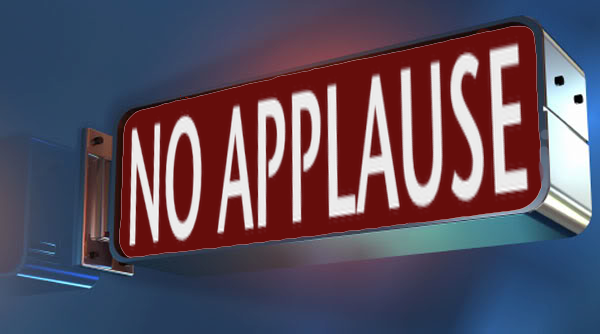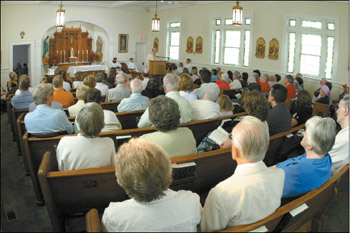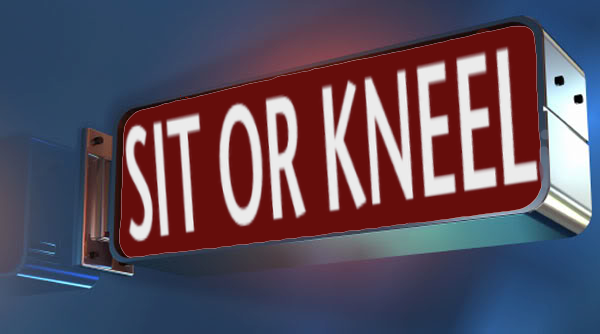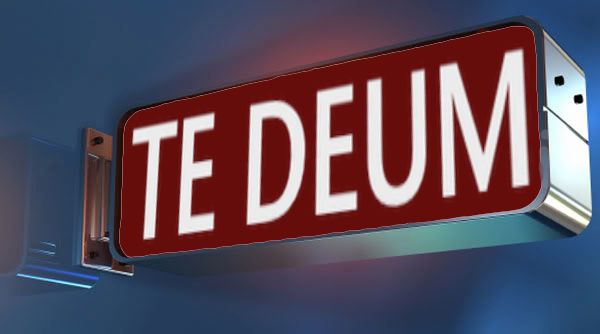I think there must be a new Olympic event that many Catholic parishes are preparing for. It seems that no matter what parish I go to I observe what must be some form of training. This form of training occurs after Communion. What I refer to is Synchronized Sitting.
You might ask what Synchronized Sitting is? This is when everybody sits at the same time after Communion. The event is normally synchronized to occur at the same time as the priest/deacon finishes the purification of the sacred vessels and sits down. If the Deacon purifies the vessels and the priest sits down for a time of reflection, then people don’t sit down yet. A blind person would know just when the purification of the sacred vessels is complete by the sound of everybody sitting down at once.
It is interesting how these strange non-rubrics occur in the liturgy and become common practice. People just take their cues from others for the most part.
Now as you might expect Synchronized Sitting is not referenced in the GIRM. In fact after Communion the GIRM says:
they may sit or kneel while the period of sacred silence after Communion is observed.
So people may choose as what they feel most conductive to this sacred silence after Communion. If they choose to sit they may sit immediately after returning to the pew. No need to wait for the purification of the sacred vessels to be completed and the last man in the sanctuary is seated.
I myself prefer to remain kneeling until the concluding rites. Though with everybody else sitting down I would stick up like a sore thumb. “Oh look at Mr. Pious there remaining kneeling while everybody else is sitting down.” So I normally sit down at the same time as everybody else. Pew pressure don’t you know.
What I also find funny when the Deacon does the purification, often what happens is that once the Deacon sits down the priest stands up for the concluding rite. So you have this awkward everybody sitting down and then seconds later everybody standing up. Pew calisthenics. “Kneel, Sit, Stand” to get your heart rate going and warming up I guess for the mad dash to the parking lot you so often see at the end of Mass.
Maybe we need to use the same system they use for live TV shows to indicate to the audience what to to. The Rubric Information System (RIS) could be placed unobtrusively in the church, maybe above the hymn indication sign so often used. The RIS could make it clear to people what the acceptable rubrics are for that part of the Mass to end confusion. The messages in the RIS would be standard so that parishes could not use the RIS for GIRM-defying phony rubrics. After Communion the sign would go to:
Of course I am joking about introducing something like this into Mass, but if we had it I would certainly like to see this message at times in some parishes.

In fact for special occasions when people really want to praise someone we can turn on this message.
After all what do we have that He has not given us? Reciting the Te Deum Laudamus would be perfect in these cases.




37 comments
I was told once that you’re supposed to sit when the remaining hosts are returned to the tabernacle and the door thereof is closed. That seems to be about when everybody sits down in my parish.
At least in my archdiocese (Seattle), the archbishop has explicitly given instructions for the parishes here to remain standing after Communion — because there is supposed to be a “after Communion” hymn to sing together. Presumably, this is one of those permitted local variations on the GIRM; we stand after the Agnus Dei too.
The Vatican allows the bishops conferences to set this, not individual bishops – though I guess it is just possible for a Bishop to use the “as circumstances allow” clause to set a totally different rubric. The USCCB approved GIRM specifies sit or kneel and either is allowable for the Communicate. To make people stand is contrary to the GIRM and really a lousy liturgical position for sacred silence.
But as for the general phenomena of rubric-that-isn’t-a-rubric… historically, that is probably where almost ALL rubrics originated, on the laity’s part and even on the priests: sensus fidelium and all that. It just **feels** like the proper reverent thing to do, and eventually it gets codified. In this case, no matter what the GIRM says, most people feel that, whether kneeling sitting standing or doing hula-hoops, the congregation *ought* to all be doing the exact same thing after Communion. Some future edition of the GIRM will probably get more specific where the current edition is open-ended.
Maybe we could get a “No Exit” sign to prevent people from fleeing after having received Communion. You should do another tongue-in-cheek blog post about one of the benefits Catholics get from receiving the Real Eucharist is that they gain supernatural speed in order to be able to run out of the Church before the concluding rites.
I definitely would want to see the ‘No Applause’ sign – and they could just leave it turned on to save anyone the trouble of figuring out when it should be on…
I like to think it is a popular appreciation of the Real Presence, and that we kneel until “Jesus has left the building” by purification of the vessels (or at least has been shut up in the tabernacle). I hope it is.
Hahaha! Great post and very true. I actually really hate the more localised form of synchronized sitting, when you make a move from the kneeling position only to have the person next to you sit down at the same time. It makes it look like you’re just taking cues from each other. If I see it happening, I usually just pretend I was shifting my weight and say another Hail Mary or two before getting up.
Yes, the GIRM states that Bishops can establish different guidelines; in our archdiocese (Anchorage) our Archbishop has done just that. So we stand until Jesus is returned to the tabernacle, then we all bow and sit or kneel. I don’t get it, personally. Why kneel AFTER he’s no longer right in front of me? But then, I’m in favor of kneeling bars. So hey.
The Spokane bishop also issued a explicit instruction in his diocese. The faithful are supposed to remain standing until all those receiving communion have received. Then everyone is sit or kneel. I believe the idea was supposed to be that we all received together as one “body of Christ” and then did whatever posture we chose (sitting or kneeling). In practice it is very awkward because for one standing is not a comfortable position to hold especially if you were one of the first to receive and now you are waiting… Also it is annoying because instead of immediately being able to be prayerful you have to watch the communion line to see when the very last person receives. The bishop issued the requirement and yet because of the obvious awkwardness, every time I go to the cathedral most of the people still just kneel or sit after communion. The worst part is that there are a few obedient Catholics that happen to know the requirement of the local bishop and they stay standing…. about 10% at large events like ordinations. So now you have people kneeling, sitting, and a random few still standing. It looks really schizophrenic.
Richard said “at least has been shut up in the tabernacle”
That has always been the tradition as I was taught 60 some years ago.
Gil
Oh, and always kneel while the Tabernacle doors are open.
Gil
In the Extraordinary Form people who are kneeling after communion are to sit after the Priest does his second ablution (the altar server pours water on his fingers over the chalice and he consumes the particles remaining). I believe, but am not sure, that it does signify that all the particles have been consumed from the altar and therefore we can now sit and wait for the closing prayer. It may be just a hold over from this rubric, but at a different point.
THESE EXIST.
I saw them in use in a suburban parish in deepest Poland. I think they were announcing the hymn numbers. But it was still pretty weird.
I don’t sit until I am sure the sacred species have been properly cared for so when the priest, deacon or acolyte finishes purifying the sacred vessels and I know our Lord is either in the tabernacle or the tabernacle of an ordained or installed man. Call me old fashioned but when the Lord is present body, blood, soul, and divinity outside the tabernacle I kneel.
If I’m not mistaken there is a “general rubric” (I’m sure it’s not called that) that basically says, “when in Rome…”. In other words if something is not codified it is suggested that the people follow the lead of the congregation and do what the group does as a sign of union with the whole Body.
From the Diocsese Thou Shalt No Kneel (Orange),
It seems that in addition to the priests remaining seated for most of the prayers, the frequent orans posture by the congregation, that applause is becoming more common.
When our you curate announced at the end of his sermon that he was being transferred, there was wild applause. Then after the pastor did a “going away” blessing at the end of Mass, accompanied by everyone holding their hands up in blessing too, there was another extended round of applause. I thought members of the parish liked him.
Luckily we follow the norm in my diocese. I kneel after Holy Communion until the priest begins to speak for the closing of the Mass.
It is WIERD to go somewhere where everyone is to stand after Communion and all sit together–no praying! Just sing some modernist song generally. I will not do it. Period.
All these innovations can be avoided by attending the Latin Mass.
How about HAND-HOLDING and NON-HAND-HOLDING sections?
How about the really weird callesthenics that occurs after communion and just before the final blessing. We are asked to stand for a prayer, then sit for announcements, then up again.
Is “common posture” an appropriate term?
Nick Alexander wrote a hilarious song about this subject, called “Should I Stand or Should I Kneel?” in his first album “A Time to Laugh”. I never laughed so hard in all my life. See http://www.nickalexander.com/home/
Truthfully, I’m not interested in what the priest or the deacon (or the congregation for that matter) are doing. I knee until the Tabernacle door is closed….then I sit, unless I am still praying in thanksgiving.
Thanks for the no applause suggestion, it brought a chuckle to a rough day. I’ve always taught my kids not to applaud after mass (even if everyone else does) because it’s not a performance. When I took them to the March for Life in Washington 2009, there was a vigil mass and during the homily the congregation broke out in applause every time the cardinal mentioned the specific pro-life duties of government and its catholic officials. My daughter then asked me: why are they applauding? it’s not a performance.
I still don’t know what my answer should be. Should I say that applause during a homily is ok or not?
Love this article!!
This whole problem can be solved by adopting the Orthodox practice of standing during the entire Divine Liturgy, except for one prostration at the anaphora and one when the priest holds up the chalice before communion.
I’ve observed this non-rubric for years. What it always implied to me was that people were watching for the moment when they could sit down, rather than praying. I never figured out a way to eradicate it. BTW: When I celebrate Mass in someone else’s parish, it is almost always obvious–from the way the people stand when I reach the chair after Communion–that they do not expect what I do then, namely, sit down for a minute or so of silent prayer.
BTW: There really ARE no rubrics for the congregation. And bishops have no business issuing directives that attempt to impose non-traditional postures and gestures on the people. Such directives should be ignored.
We sit for the second collection. And I love the hand-
holding section idea.
I’ve always been told to kneel after Communion since I was a little girl, however I see no problem with sitting or standing either as long as you are being quiet and respectful. Anything is better than those people who receive Communion and leave before Mass is even over.
Funny idea, Jeff. These would be much better than, say, big screen TV’s hung around the sanctuary flashing the words of the hymns!
No hand holding during the Our Father sign please.
Chad Myers: “Maybe we could get a “No Exit” sign to prevent people from fleeing after having received Communion.”
I don’t know about this one. We literary/philosophical minded Catholics might have our mind wander to Jean-Paul Sartre. “Hell is other people”? Oh, yes it is. Mass may be heavenly, but Hell is having to sit behind a half-naked teenage girl and having to give money to a middle-aged usher wearing flip-flops, shorts, and a Bud-Light t-shirt.
Hey Jeff,
Just wanted to let ya know that I re-posted this post over on my blog because I liked it so much. You can find it here : http://www.yourcatholicblog.com/?p=59 I made sure to give you credit and link back to your blog. We’re getting some more comments on it over on our blog so I thought I’d give you the heads up. Thanks for this great post!
Erin
We wait for the clanging of the Tabernacle door being shut, after Communion. Then everyone sits.
Over 50, so I learned my earliest rubrics right during V2. We were taught to kneel until the Tabernacle door was closed.
In my parish, the Tabernacle is in a side chapel, so the priest/deacon/EEM would have to SLAM the door so we could hear it, so the newly developing rhythm seems to be when the priest is done “doing the dishes.”
Talk above about rubrics arising from what feels reverent: I believe that the motion of the three crosses head, mouth and breast popped up in France when people started copying what the priest did when he announced the Gospel. They liked it, they copied it, and now we all do it. I don’t believe it’s required, but one’s arm just jerks up to do it, drawn by everybody else.
I would suggest another light-up sign that says “BOW, DAMMIT!” at the appropriate line in the Creed. What a lot of non-benders my parish has!
“the priest/deacon finishes the purification of the sacred vessels”…
Our here in the fringes of the Spokane diocese, our pastor hasn’t decided to follow this yet. A lay person puts the consecrated hosts back in the tabernacle, four or five lay people take the sacred vessels back to the sacntuary to wash, an altar server (usually a girl) “cleans up the altar” while father sits down. And two “ministers of the Host” for maybe 60 communicants? This from a priest who gets irritated when we kneel when we “should be” standing or vice versa or something. Who’s supposed to be “doing the red?”
John